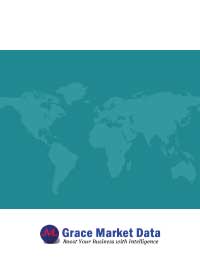Europe Clinical Alarm Management market was valued at $578.3 million in 2022 and will grow by 20.6% annually over 2022-2032, driven by alarms’ ability to reduce costs and enable better patient management, the rising illness prevalence along with expanding elderly population, an increasing alarm fatigue, and technological advancements coupled with the growing adoption rate.
Highlighted with 32 tables and 40 figures, this 97-page report “Europe Clinical Alarm Management Market 2022-2032 by Component (Solutions, Services), Product (Nurse Calling Systems, Physiological Monitors, EMR Integration Systems, Bed Alarms, Ventilators), End User (Hospitals & Clinics, Long-term Care Centers, Ambulatory Care Centers, Others), and Country: Trend Forecast and Growth Opportunity” is based on a comprehensive research of the entire Europe Clinical Alarm Management market and all its sub-segments through extensively detailed classifications. Profound analysis and assessment are generated from premium primary and secondary information sources with inputs derived from industry professionals across the value chain. The report is based on studies on 2020-2022 and provides forecast from 2023 till 2032 with 2022 as the base year. (Please note: The report will be updated before delivery so that the latest historical year is the base year and the forecast covers at least 5 years over the base year.)
In-depth qualitative analyses include identification and investigation of the following aspects:
- Market Structure
- Growth Drivers
- Restraints and Challenges
- Emerging Product Trends & Market Opportunities
- Porter’s Fiver Forces
The trend and outlook of Europe market is forecast in optimistic, balanced, and conservative view by taking into account of COVID-19 and Russia-Ukraine conflict. The balanced (most likely) projection is used to quantify Europe Clinical Alarm Management market in every aspect of the classification from perspectives of Component, Product, End User, and Country.
Based on Component, the Europe market is segmented into the following sub-markets with annual revenue ($ mn) for 2022-2032 included in each section.
- Solutions
- Services
Based on Product, the Europe market is segmented into the following sub-markets with annual revenue ($ mn) for 2022-2032 included in each section.
- Nurse Calling Systems
o Button-Based Systems
o Integrated Communication Systems
o Other Nurse Call Systems
- Physiological Monitors
- EMR Integration Systems
- Bed Alarms
- Ventilators
- Other Products
By End User, the Europe market is segmented into the following sub-markets with annual revenue ($ mn) for 2022-2032 included in each section.
- Hospitals & Clinics
- Long-term Care Centers
- Ambulatory Care Centers
- Other End Users
Geographically, the following national/local markets are fully investigated:
- Germany
- UK
- France
- Spain
- Italy
- Netherlands
- Rest of Europe (further segmented into Russia, Switzerland, Poland, Sweden, Belgium, Austria, Ireland, Norway, Denmark, and Finland)
For each key country, detailed analysis and data for annual revenue ($ mn) are available for 2022-2032. The breakdown of national markets by Component, Product and End User over the forecast years are also included.
The report also covers current competitive scenario and the predicted trend; and profiles key vendors including market leaders and important emerging players.
Selected Key Players:
- Amplion Clinical Communications, Inc.
- Ascom Holding AG
- Baxter International Inc.
- Capsule Technologies, Inc.
- Connexall USA, Inc.
- Dr?gerwerk AG & Co. KGaA
- GE Healthcare
- GlobeStar Systems Inc.
- HCA Healthcare
- Hill-Rom Services, Inc.
- Johnson Controls International PLC
- Koninklijke Philips N.V.
- Masimo Corporation
- Medtronic PLC
- Mobile Heartbeat (Subsidiary of Hospital Corporation of America)
- Spok, Inc. (Subsidiary of Spok Holdings, Inc.)
- Vocera Communications, Inc. (Stryker Corporation)
(Please note: The report will be updated before delivery so that the latest historical year is the base year and the forecast covers at least 5 years over the base year.)



